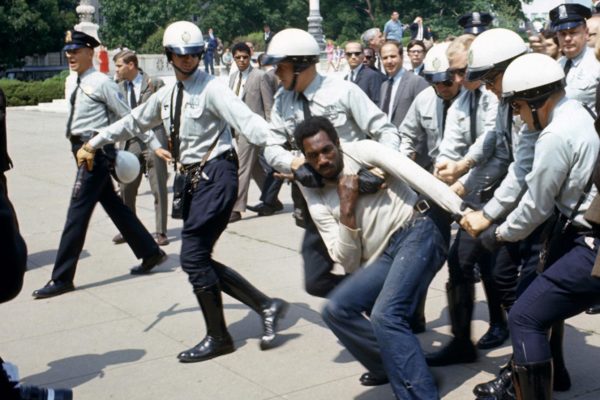August 30, 1956: R.C. Hickman, a photojournalist for the NAACP, arrived in Mansfield, Texas, to cover the integration of the local high school. He knew it would be a dangerous assignment, not just because Hickman himself was black, but because documenting race issues in America was risky business.

As he approached the school, he saw three figures swinging from the playground trees: effigies of black students, mock-lynched by a white mob.
Hickman worked quickly to capture the haunting scene but was spotted and chased by the mob. He was able to get to his car and drive off, but he was pursued all the way to Fort Worth. The chase finally stopped after Hickman fled into a funeral home.
Photojournalists often put themselves in danger to document the violent responses to civil rights activism. Their photos were critical in capturing the police brutality and the intimidating, unsavory tone of counterprotests. Whether they were covering current events as Hickman was, or embedded in the struggle, their pictures were the public’s window into the movement.
The Dolph Briscoe Center for American History’s new exhibit, Struggle for Justice, celebrates their legacy and emphasizes the role that photojournalists played in the politics of civil rights.
“At first glance, these images simply present a striking visual record of the civil rights movement: its trials and successes,” says Don Carleton, executive director of the Briscoe Center. “And yet, they remain so salient. They touch upon issues very much still with us. They are able to conjure within us questions about the America we live in today, as well as the one we’ve inherited.”

The exhibit features nearly 60 photographs taken from 20 photographic archives housed at the center. Dating from the 1930s to 1970s, the images focus on five areas — signs of segregation; organizations and leaders of the civil rights movement; the risks and threat of violence that civil rights activists faced from their fellow Americans; marches and protests; and a section that documents the contemporary achievements of the civil rights movement.



Visit Struggle for Justice
Sid Richardson Hall, Unit 2
The University of Texas at Austin
Austin, Texas
November 10, 2017 — July 21, 2018
Monday–Friday, 10 a.m.-5 p.m, Saturday, 9 a.m.-1 p.m (SEE EXCEPTIONS)




